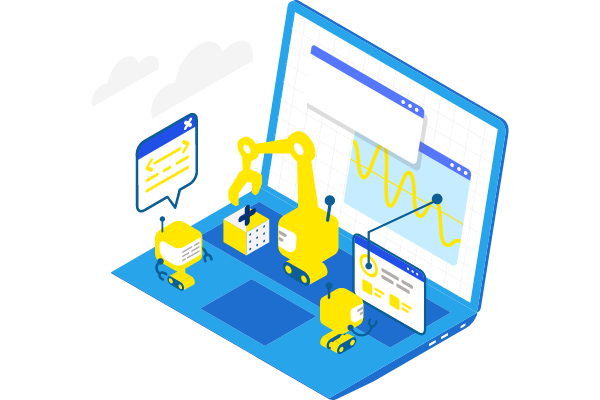The 10 Software Development Best Practices for 2022

The year 2022 is just over three years away, and software development best practices will evolve significantly over the next few years. Of course, no one can predict exactly what those changes will be.
Still, it’s essential to stay ahead of the curve by anticipating what they might be and thinking about adjusting your business strategies accordingly to take advantage of them.
Here are 10 software development best practices that we predict will be particularly important in 2022, along with some ideas on how you can start preparing to implement them successfully as soon as they become relevant to your business.
Top 10 Software Development Best Practices For 2022 and Beyond
1. Coding is no longer enough
With an increasingly competitive marketplace and changing technologies, your software development best practices must adapt to a new reality.
If you think about it, there are many risks involved in any given project that could threaten its success. We can learn from past mistakes—such as failed projects that ran over budget or were unable to deliver on time—and incorporate them into our processes so we don’t repeat those same mistakes.
2. Continuous Integration
In software development, continuous integration (CI) is a software engineering practice where team members integrate their work frequently; usually, each person integrates at least daily – leading to multiple integrations per day.
Each integration is verified by an automated build (including a test) to detect integration errors as quickly as possible.
Many teams still do manual builds, and there may be multiple verification steps that don’t use automation. The point of CI is to find and fix problems early before they get too tricky to track down and fix.
3. DevOps
The most important best practice to prevent risks in software development is DevOps, a methodology that combines development and operations.
It was created out of a need to merge these two disciplines because of their very different ways of thinking. DevOps aims to eliminate communication barriers between developers and system administrators by allowing them to work closely together from the early stages of software development.
4. Design Thinking
While some people view design thinking as a magic bullet that will lead to a fantastic user experience and a viable product, it’s essential to understand that it has both benefits and risks, just like all other development processes.
These risks include losing focus on your customers, technical difficulties transitioning from low-fidelity prototypes to high-fidelity ones, etc.
If you’re considering using design thinking in your next project, make sure you know what risks are involved before you begin.
For example, The average cost of a website development project is $6 million, but remember that there are many risks involved in the web development process that can increase the actual website development cost.
5. Lean UX
It’s not uncommon to hear software development project managers claiming they’ve conducted UX research with users. But that can be misleading.
No matter how much research you do, it won’t guarantee you are building something people will want to use; however, having no idea what people think of your product is a big risk in software development.
To avoid this risk, try approaching design from a lean perspective and build only what is necessary and validate it through usability testing before making more features.
Read Also: Blockchain in Banking: What You Need To Know?
6. Agile Methodology with Scrum Framework
If there’s one software development best practice that gained traction in recent years, it must be agile methodology. Agile is so popular because it’s flexible and scalable; since many tech companies don’t know precisely what they need at the outset, it makes sense to start small with a simple deliverable, then develops and tweak it as soon as possible.
Scrum is a leading agile software development method. Scrum comes from a line-out formation in rugby and football called Scrum (in which players interlock with their arms). With Scrum, cross-functional teams work together to meet sprint goals on an iteration basis.
This helps organizations identify and respond to issues faster. Scrum also maintains transparency about what features are under development and how they will be delivered to customers.
7. An API First Strategy
The future of software development is API-first: a future in which it doesn’t matter if you use a website, an app, or a voice interface; what matters is that you use APIs.
We’re already seeing this trend with companies such as Amazon making their Alexa Skills Kit available to third parties so developers can build on top of their platform.
We’ve been hearing about API-first strategies from our clients and partners repeatedly—and they are winning big.
8. Keeping Secrets Off Network Devices
Because of increased concerns about cyberattacks, more and more organizations keep their sensitive information off-network devices. It’s essential to take precautions with any data on your laptop or hard drive because it is much easier to steal than most people realize.
Don’t keep any information on your device that you don’t want compromising by a thief or hacker.
Do everything you can to avoid making it easy for someone to access your data remotely, even if they do not have physical access to your device.
9. Securing IoT, Robots, and Drones
Securing IoT devices is a top concern of IT leaders in 2012. As more and more companies embrace the Internet of Things (IoT) technology, they’re becoming aware of its risks. They are turning to internet security professionals to make sure these risks don’t interfere with their business goals.
In fact, according to Gartner Inc., by 2022, more than 25% of [enterprises] will have suffered at least one IoT-related security breach or attack.
10. Bring Back Artificial Intelligence
As a technology, artificial intelligence (AI) peaked in popularity around 2012 but has since gone mostly dormant. This was mainly due to early iterations of AI being too difficult to implement on an enterprise level.
However, those issues have been addressed, and we’re ready to see AI return. It’s already happening; research firm IDC predicts that by 2022 there will be 1 billion devices connected through AI networks—and that number is expected to double by 2025.



